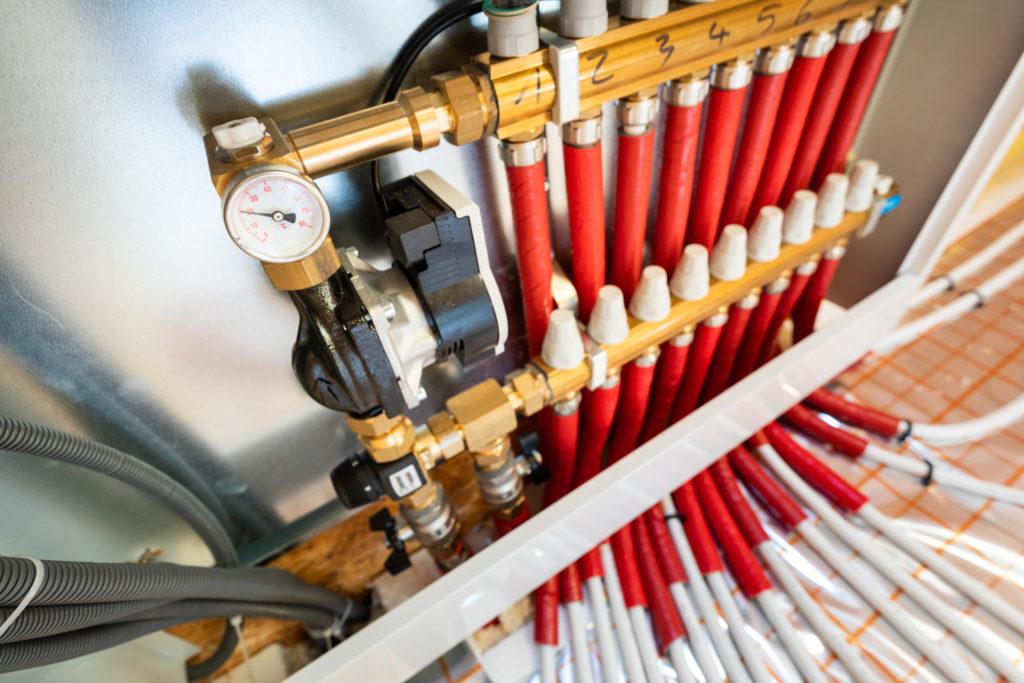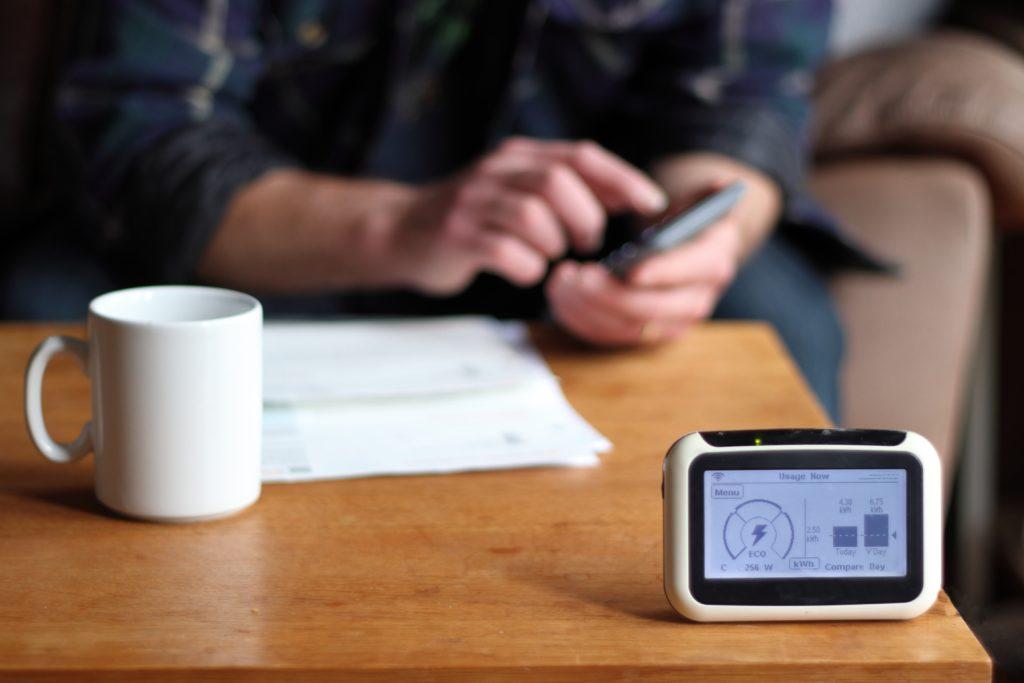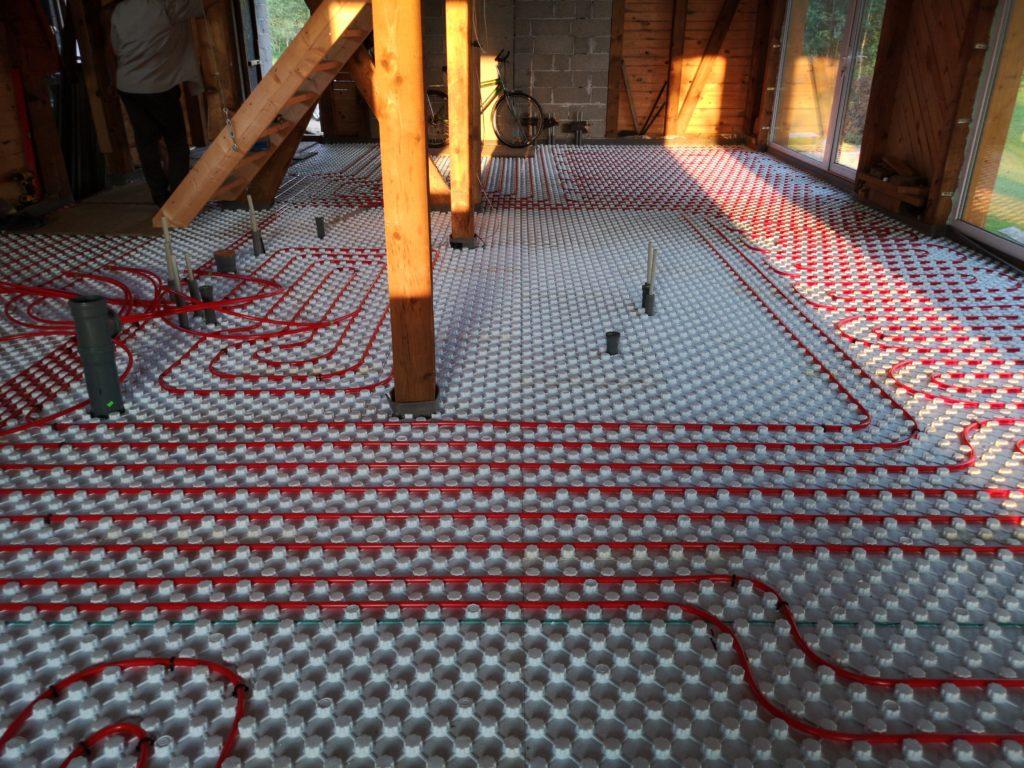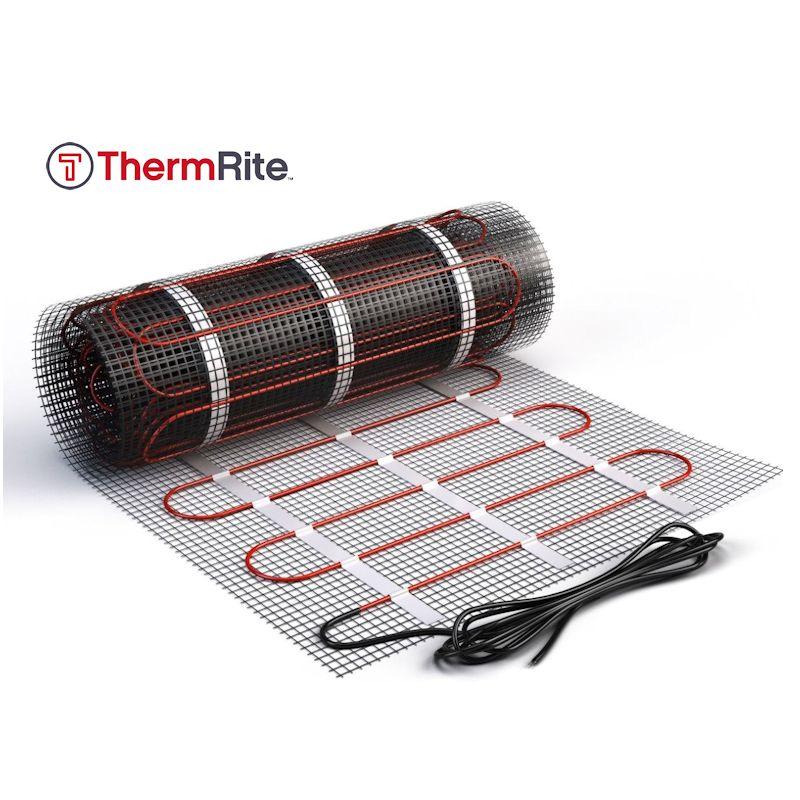Contents
- Introduction
- How Does Underfloor Heating Work and What Is It?
- What Do You Need for Underfloor Heating?
- The Key Components
- A Step-by-Step Guide to Install Underfloor Heating
- What is the Cost to Install Underfloor Heating?
- Cost for Electric Underfloor Heating Installation
- Cost for Wet Underfloor Heating Installation
- 3 Different Types of Underfloor Heating Systems
- Advantages of Underfloor Heating
- FAQs
- Conclusion
Introduction
An Underfloor Heating System (UFHS) is a method of heating a room by radiant heat. This system creates a heat emitter within the floor which in turn radiates to the room. The floor is heated by a system of pipes or cables placed under the floor finish. This system has been developed and enhanced for years, and over time, advanced methods have been employed to make it more efficient.
The underfloor heating system can be installed to heat a newly developed house or as a retrofit system using pipes/cables within an existing build. A UFHS can equally be utilised to heat one specific room or the whole house, the choice is yours.
All of this sounds pretty fascinating and easy to do, but there’s a lot that goes behind getting the system up and running. So fret not. Our team at The Floor Heating Warehouse are here to walk you through all the steps in detail.
By the end of this article, you’ll have a sound knowledge of how to plan your underfloor heating system.
How Does Underfloor Heating Work and What Is It?
An underfloor heating system operates by turning your floor into a heat emitter that in-turn radiates warm air, making the space warm and cosy. The system is efficient, strong, and affordable. Primarily there are two types of underfloor heating systems, the wet/hydronic underfloor heating system using pipes and the electric underfloor heating system using cables.

In both methods, flexible tubing (pipes/cables) is fixed underneath the floor, providing comfortable room thermal conditions. The systems work by radiating heat into the room via the floor.
Both methods are efficient and reliable. The one that you opt for entirely depends on your personal choice, space requirements, and budget.
An underfloor heating system has many advantages, and it has become an increasingly popular choice among many homeowners and builders in the UK.
A key aspect of underfloor heating over radiators is the fact that underfloor heating heats from the floor up. Simply walking on a warm floor instils the feeling of warmth on the body, but the fact that the floor is radiating the heat directly upwards across all aspects of the body makes for a much more beneficial and purposeful heating system. The underfloor heating system is designed to be most efficient in the area of the room populated by the human body – so from the floor up.
What Do You Need for Underfloor Heating?
An underfloor heating system is designed specifically according to room size and shape, however, it generally consists of a common group of components.
Here are the key components that will ensure the correct operation of your UFHS.

The Key Components
- Manifold – The Manifold is the part of the system that is responsible for taking warm water from a boiler or heat pump and distributing it to the flexible heating pipes within the floor at the correct flow rate.
- Piping – The Manifold is the part of the system that is responsible for taking warm water from a boiler or heat pump and distributing it to the flexible heating pipes within the floor at the correct flow rate.
- Wiring Centre – A wiring centre in a UFHS connects the thermostat, actuator, boiler, and pump connections to a single point. The wiring centre is essentially the brain of the system and also allows easy connection of all components, simplifying the installation process.
- Thermostat – The underfloor heating system comes with individual thermostats for each room. This way, you can set the desired temperature with programmable on/off times in each room independently.
A Step-by-Step Guide to Install Underfloor Heating
Now that we have covered the basics of the underfloor heating system and all that is required, let’s have a look at the step-by-step guide to installing the system.
- The first step is the underfloor heating insulation, which is very important to improve the efficiency of the system. The insulation creates a barrier to prevent the heat from travelling downwards and ensures that it radiates upwards only. The insulation for an in-screed system is normally a rigid board type with a foil top.
- Next, installation of the underfloor heating manifolds – these are screwed to the wall normally approximately 400mm from floor height.
- After cleaning the insulation or subfloor of any grit and dirt, lay the pipes following your supplied pipe layout, using the pipe clips whilst paying attention to the designed pipe spacing indicated on your drawing.
- Connect the pipes to the manifold using the supplied pipe connectors.
- Fill the pipes with water and pressure test.
- Lay the screed (liquid self-levelling type or traditional screed) over the pipes and insulation.
- Finally, let the screed dry. After the screed has dried completely, turn on the heating system at the lowest temperature and then gradually increase it after a few days in accordance with our commissioning instructions.
Our in-depth installation and commissioning guide supplies significant detail on all of the above steps.
What is the Cost to Install Underfloor Heating?
The wet system is generally more expensive than the electric system, which is quite cost-effective. On average, the wet system can cost in the region of £90 per square meter, while the electric heating system costs approximately £50 per square meter.
The gross expenditure on the underfloor heating (heating system, installation, material, and service charges) will be around £500 to £8,000.
The total cost depends on the heating system that is installed and the area that is covered. An electric system will generally cost less than a wet system.
Cost for Electric Underfloor Heating Installation
The cost for electric underfloor heating installation is as follows:
New-build project: £50 to £75 per square meter.
Existing property under renovation: £60 to £85 per square meter.
Cost for Wet Underfloor Heating Installation
The cost for wet underfloor heating installation is as follows:
New-build project: £90 to £135 per square meter.
Existing property under renovation: £135 to £185 per square meter.

3 Different Types of Underfloor Heating Systems
There are broadly two types of underfloor heating systems; wet and electric. However, the wet system has two further categories.
Warm Water In-Screed Underfloor Heating
In this system, 16mm pipes are installed over the insulation and then a layer of screed is spread on top. The screed is then dried and covered with your desired floor finish.
This system is controlled by a manifold which is normally housed inside a cupboard. The floor slab radiates heat in the warm water buried under the floor heating system.
Pros
- Energy-efficient system
- Cheap installation
- Drastically reduces the electricity bill
Cons
- The existing floor screed may need to be removed to install the system
- Not ideal for existing properties
Warm Water Overlay Underfloor Heating
This system is a better alternative to in-screed underfloor heating in existing builds because there’s no need for a complete overhaul of the existing floor structure.
It involves a specialist system where 12 or 16mm pipes are installed into insulated panels or castellated (plastic floor panels) on top of existing floor screeds.
These systems are low-profile and normally retrofitted UFHS in existing properties as opposed to new builds.
Pros
- Low profile
- No removing of existing floor
- Energy efficient
- Easy to fit
Cons
- More expensive
- Retrofitting will change floor heights
Electric Heating System
An electric heating system is less expensive than a wet heating system and has a minimal effect on floor heights. This makes it a popular choice among many to heat their rooms. There are many options available ranging from loose cables, cable mat systems, carbon film and foil systems.
A popular electric system is the cable mat system, which consists of a fibreglass mesh mat with a cable pre-attached to the top at the correct spacing. This mat has an adhesive underside to stick it to your floor.
The electric system is controlled by thermostats to regulate the temperature and allow programming of on/off times. The mats are thin and sleek and fit directly below the tiles within the tile adhesive.
Cable mat systems are particularly convenient for use below tiles in kitchens and bathrooms.
Pros
- Easily retrofitted
- No overhauling of the original floor structure required
- Less expensive installation and upfront costs
- Great for individual spaces
Cons
- High running costs
Advantages of Underfloor Heating
Underfloor heating systems have become increasingly popular among homeowners because of the wide variety of benefits that they have to offer. Of course, there is an initial installation cost, but the investment starts to reap rewards within a few months.
Here are a few of the advantages of an underfloor heating system.
#1 Cost-effective
The upfront costs may seem higher, but in a few months, the underfloor heating system will prove to be cost-effective. This modern heating system is more energy efficient than older heating systems.
Standard wall-hung radiator systems run using a supply temperature in the region of 65-70 degrees c. In contrast, a standard boiler-fed underfloor heating system circulates water at a temperature in the region of 50 degrees centigrade. So even before the introduction of renewable energy systems, we can see that underfloor heating systems are superior in their efficiency by virtue of requiring less water heating.

If comparing purely on heat-up time alone, to a cold room, then radiators will heat a room faster – in approximately 30 minutes for a well-insulated room compared to 1-2 hours for underfloor heating. However, initial heat-up times can be deceiving, and the radiator has heated the room less efficiently and at a higher financial cost and with a greater effect on our environment.
As previously mentioned, underfloor heating requires a lower water supply temperature in the first instance. But another major factor that tips the balance of effectiveness over underfloor heating is its ability to build up a thermal mass or storage of heat. The combination of water underfloor heating pipes installed within a screed creates a highly efficient heating system, able to store heat and emit it into the room for a prolonged period after the best source has stopped supplying hot water.
This creation of thermal storage of heat (thermal mass)
Wet and electric systems are both similarly efficient. The wet system can cost slightly more to install, whilst the electric system can cost more to run.
They both work equally well, so deciding between the two is a personal choice.
Electric systems are better suited for single room heating, while wet systems are more budget-friendly for heating the whole house.
#2 Low Maintenance Cost
Both wet and dry systems are easy to maintain. One of the major reasons they’re a preferred choice of heating is that they require minimal maintenance.
At The Floor Heating Warehouse, we provide water-fed installations that are certified to BS EN 1264 standards and our WRAS-approved products ensure UK-certified quality.
#3 Effectiveness and Usability
Underfloor heating is considered widely more effective in-home heating due to the heat emitted from the entire floor area of the room, in comparison to the radiators which have a higher immediate temperature output, however much more focussed and therefore may not be felt across the other side of the floor area. In contrast, underfloor heating will not leave any areas within this heated room with any cold spots or draughts. On top of this, there is an increased control that the user can have on the use of their underfloor heating, giving you the ability to create the perfect temperature for a comfortable environment.
In terms of the usability of underfloor heating, the system is controlled by thermostats that can be placed in different zones, giving the user control of heating certain rooms up when required, however not heating any unused rooms to not waste any energy. This is done by the underfloor heating being split into zones making it more controllable to suit your perfect comfortable temperature than a radiator system.
Unlike traditional radiators, underfloor heating systems have no sharp edges or hot surfaces to give burns and cuts. They are completely safe and comfortable to use. There’s no need to keep the young ones from getting injured with this heating system.
Additionally, there is no way to reach the heating system; it is safely embedded under the floors.
#4 Easy to Install
The water and electric underfloor heating systems are both neat and easy to install. They can be installed in both new-build properties and those under renovation.

Some underfloor heating systems may require professional installation, testing and servicing. We provide a wide depth of knowledge and installation manuals on each product page, and at the bottom of our website page, so that the installation of our heating systems can be done by the customers themselves.
#5 Space-friendly
One of the obvious differences between radiators and underfloor heating is the aesthetic one. The radiator takes up large wall space and then maybe restrictive for an interior design in deeming a wall unusable for furniture. Underfloor heating by contrast, is incorporated within the floor build and therefore is invisible and leaves no requirement to factor it into an interior design and all walls are available for furniture.
#6 Liberty to Regulate Room Temperature
One of the key benefits of having an underfloor heating system is the level of control available to each individual room.

The UFHS is controlled by thermostats that can be placed in different zones, giving the user control of heating certain rooms up when required, however not heating any unused rooms to not waste any energy. This is done by the underfloor heating being split into zones making it more controllable to suit your comfort level, as opposed to a radiator system which is generally all on or all off.
#7 Compatible with All Types of Floors
Believe it or not, an underfloor heating system is compatible with all types of floors. Be it cement, vinyl, engineered wood, laminate, tile, and stone, whatever your chosen floor finish the UFHS can be efficiently installed onto it.
#8 Compatible with Renewable Energy
The introduction of renewable energy and most recently the advance in technology of heat pumps, has swayed the heating conundrum heavily in the favour of underfloor heating systems. And the reasons are simple. Heatpumps can be most efficient by supplying water at lower temperatures. A decrease in input temperature to a heating system, requires an increase in surface area radiating the heat. Or put another way, if you decrease the flow temperature you need to increase the water volume to compensate.
So, translating this to a radiator system, if you reduce the supply temperature you must increase the surface area of the radiator – essentially you must oversize the radiator when designing the system. As radiators can be unsightly and limit the design of a room by occupying wall space, the disadvantage of further increasing their size and thus reducing available wall space is obvious. In contrast however, reducing the flow temperature to an underfloor heating system is much easier to accommodate by simply increasing the volume of pipe within the floor – thereby increasing the water volume.
Underfloor Heating FAQs
What temperature should I set for my underfloor heating system?
An underfloor heating system produces radiant heat that ensures you feel comfortable even at a lower air temperature than that produced by a more traditional convection system. With our system, the floor structure is gently warmed throughout typically 23-26°C to create a large radiant surface.
Chosen room temperatures are a personal choice and are set on the room thermostat. Generally, 21-22°C is considered an average living room temperature. In-Screed underfloor heating systems operate by heating the screed which then acts as thermal storage of heat, making them very efficient to run and the thermostat will cycle on/off just to keep the temperature within the screed which then radiates to the room.
Regions with harshest climates may require a slightly higher temperature, or people who prefer to be warmer may want to do the same, but this is all easily adjusted on the room thermostat. The thermostats make it easy to increase or decrease temperatures or programme on/off times.
Is it okay to leave my underfloor heating on all day?
Do I need to turn off my underfloor heating in summer?
Can I put underfloor heating in an old house?
How Is underfloor heating different from radiators?
Standard wall-hung radiator systems run using a supply temperature in the region of 65-70 degrees c. In contrast, a standard boiler-fed underfloor heating system circulates water at a temperature in the region of 50 degrees centigrade. So even before the introduction of renewable energy systems, we can see that underfloor heating systems are superior in their efficiency by virtue of requiring less water heating.
If comparing purely on heat-up time alone, to a cold room, then radiators will heat a room faster – in approximately 30 minutes for a well-insulated room compared to 1-2 hours for underfloor heating. However, initial heat-up times can be deceiving, and the radiator has heated the room less efficiently and at a higher financial cost and with a greater effect on our environment.
As previously mentioned, underfloor heating requires a lower water supply temperature in the first instance. Radiators require maintenance such as bleeding the air out of them. This is a required practice every year to maintain the efficiency of the radiators throughout a property. As well as this annual bleeding of air, according to central heating engineers, the average lifespan of a radiator is between 8-12 years. if a radiator is more than 10 years old, it may lose efficiency and therefore will result in costing more to heat a poorly insulated household. On the other hand, radiator systems are getting more technologically advanced and studies have shown that a new radiator can be up to twice as efficient as a 20-year-old equivalent. In comparison to this, we offer up to a 50-year guarantee on our Underfloor Heating products including our pipe and manifolds.
Radiators require maintenance such as bleeding the air out of them. This is a required practice every year to maintain the efficiency of the radiators throughout a property. As well as this annual bleeding of air, according to central heating engineers, the average lifespan of a radiator is between 8-12 years. if a radiator is more than 10 years old, it may lose efficiency and therefore will result in costing more to heat a poorly insulated household. On the other hand, radiator systems are getting more technologically advanced and studies have shown that a new radiator can be up to twice as efficient as a 20-year-old equivalent. In comparison to this, we offer up to a 50-year guarantee on our Underfloor Heating products including our pipe and manifolds.
Conclusion
We hope that our step-by-step planning guide will help you understand the potential benefits of having an underfloor heating system and how this is an energy-efficient mechanism that in turn is environmentally friendly and reduces energy costs.
Not only that, it is fairly easy to maintain, and with The Floor Heating Warehouse, you don’t have to worry about the installation, we are here to assist with everything required from bespoke pipe designs, to product information and assistance from the start to completion of your project…
Underfloor heating systems are the smarter, healthier, and energy-efficient option, so choose wisely and you will benefit and be future-proofed for many years to come.



